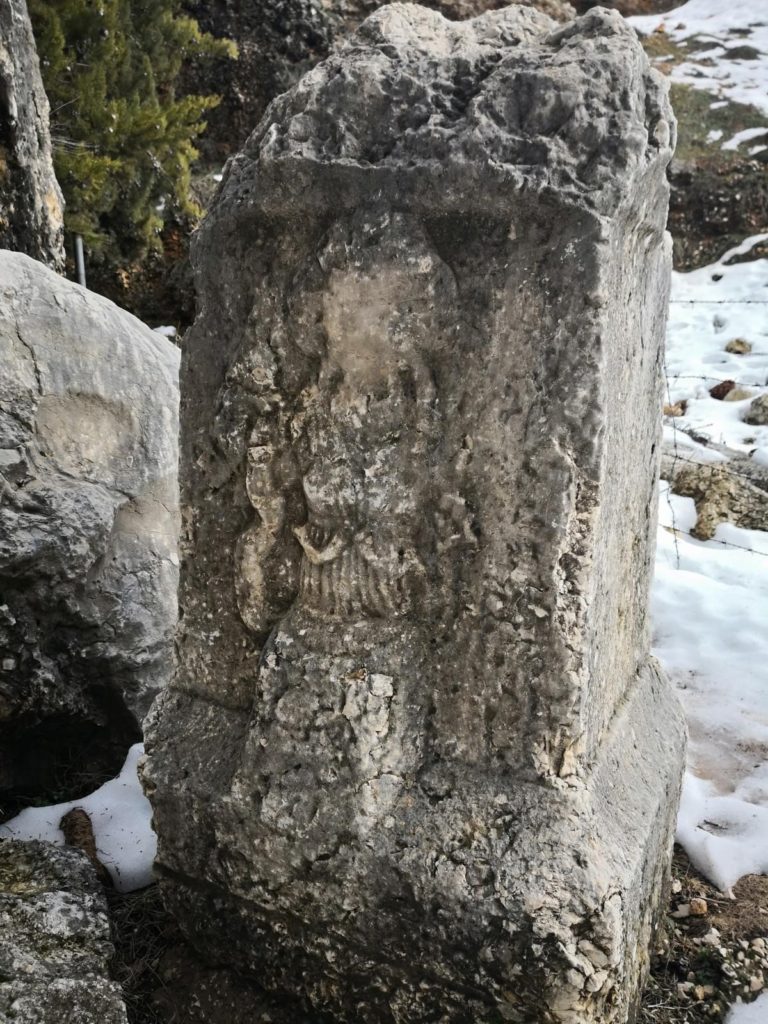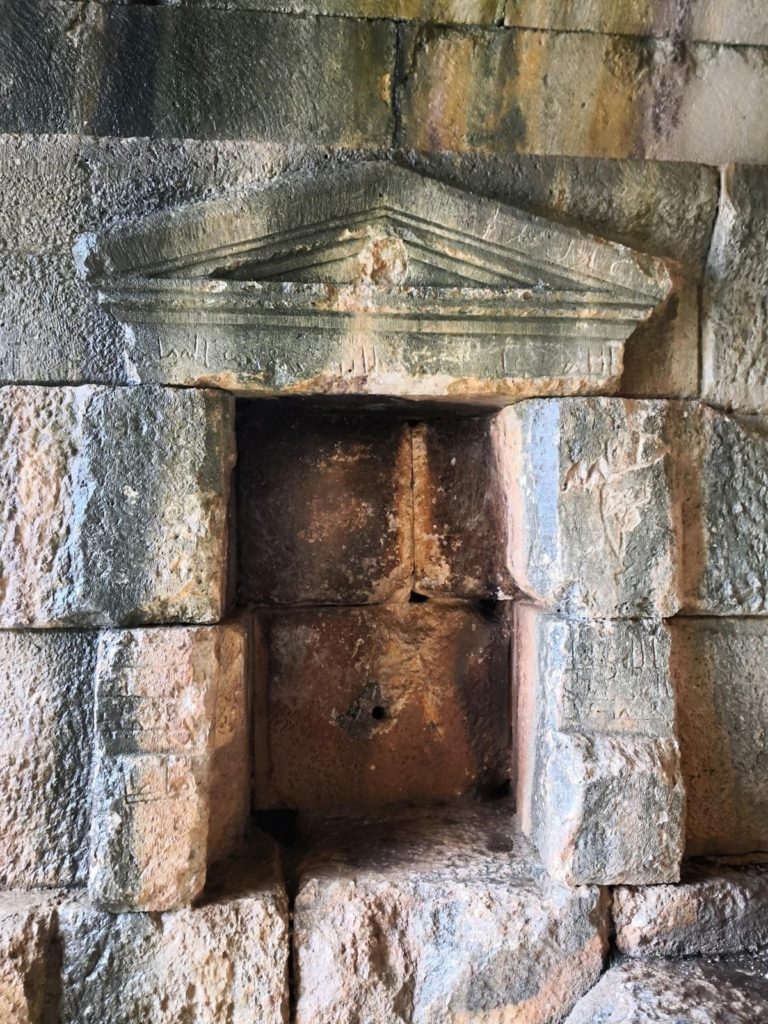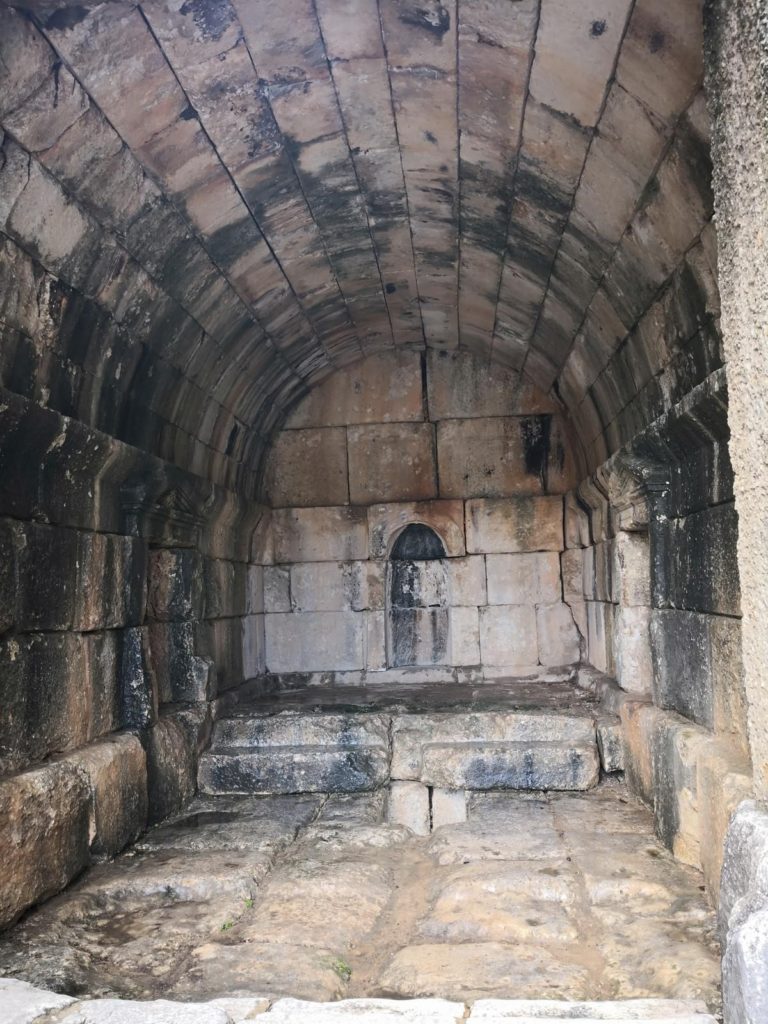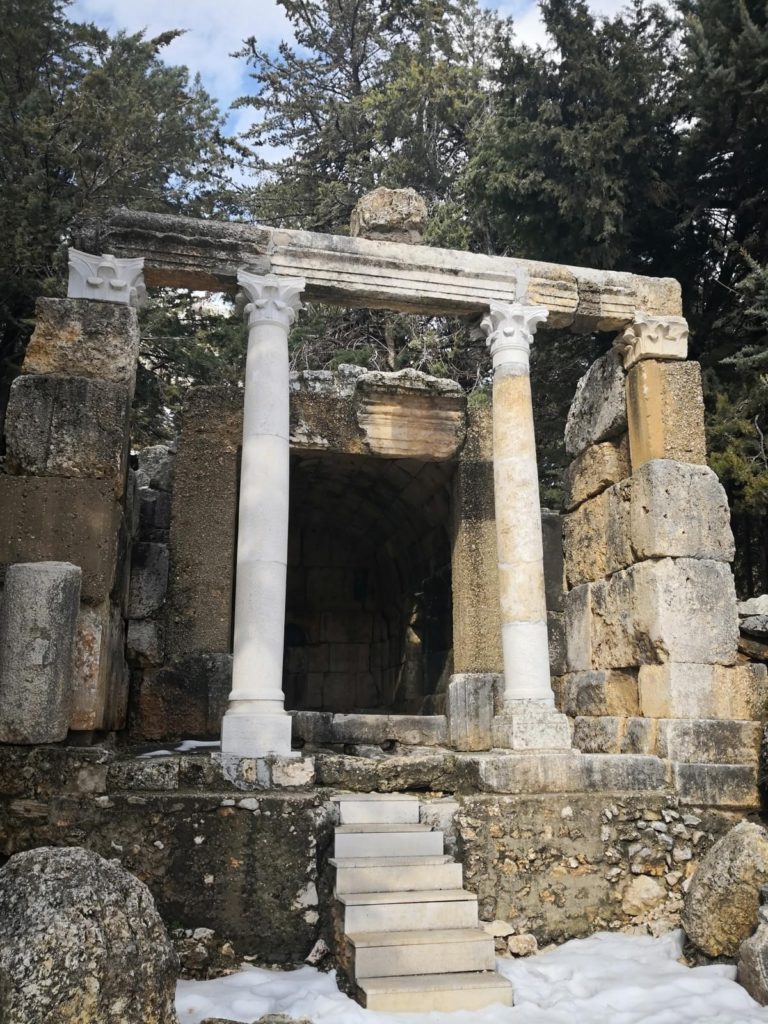Temnine El-Faouqa houses a unique nymphaeum that date back between the 1st and the 3rd century AD.
It rests on the source of Ain El-Jebb that is fed from the sources of Mount Sannine.
Structure
The structure is a vaulted building open to the south-east, of a distyle in antis plan (a structure with the side walls extending to the front of the porch and terminating with two side pillars and columns). It follows the Corinthian order.
The main room of the building is a small rectangular room about 6.50 m long and 3.50 m wide. It houses two rectangular niches crowned by two pediments that are arranged in the middle of the side walls of the room, as well as a niche in the middle of the main wall – it would be used to house an idol or a religious object.
A water canal connected to the nearby river through an underground channel can be seen on the nymphaeum platform.
Deity
The inscription engraved on the lintel of the door is too erased to reveal the identity of the god to whom the nymphaeum is consecrated. However, a votive altar was found near the building and is adorned with an eroded bas-relief depicting a standing deity holding in her right hand a pole with a snake wrapped around it. It would be Venus (goddess of love, sex, beauty, and fertility for the Romans) according to G. Taylor, and Hygieia (goddess of health for the Greeks) according to L. Nordiguian.
Karim Sokhn
Tour Operator & Tour Guide
References:
La vie Religieuse Au Liban Sous L’Empire Romain – Julien Aliquo
The facade of the nymphaeum with the side pillars and columns





